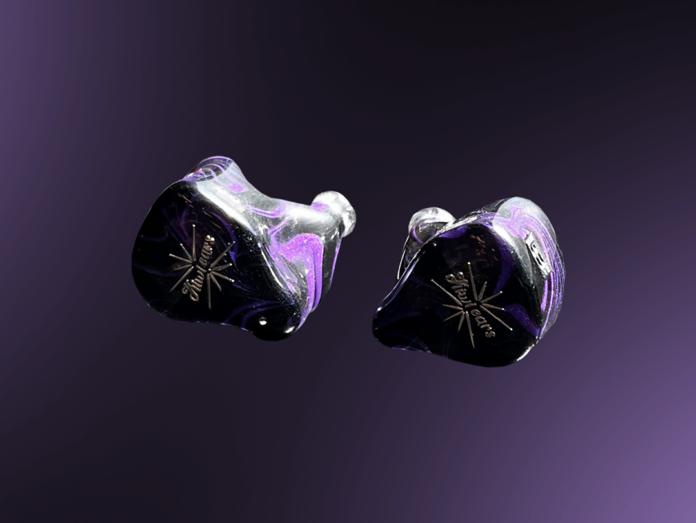Kiwi Ears, a lesser-known label hailing from Linsoul, frequently takes a backseat to the company’s more illustrious and generally higher-priced brands like Letshuoer and ThieAudio. Nevertheless, Kiwi Ears rarely fails to pleasantly surprise me, especially considering how economically their models are priced. I recently tested out the $200 Quintet, and was pretty impressed with its distinctive sound signature and skillful delivery. So, I was interested to see what the company could do for half the price with the Quartet. Does it come anywhere close to the performance of its big sister? And what kind of sound signature can you expect?
What’s in the Box?
- Kiwi Ears Quartet
- Silver-plated copper cable
- 6 pairs of silicone ear-tips
- Carrying case
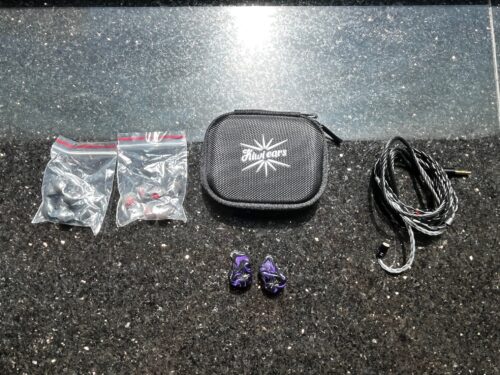
Look and Feel
The Quartet is a pretty little IEM, with purple swirls tastefully contrasting the glossy black base of the shells. I like that it’s not too bright or glitzy (though it does look a lot more vibrant in the sun), yet still offers a pleasing splash of color. The build quality seems top-notch for an IEM in this price range. And to be honest, based on build alone, the Quartet would be hard to differentiate from far more expensive models on the market. The fit was also perfectly comfortable for me, providing solid sound isolation while never feeling intrusive. No complaints here.
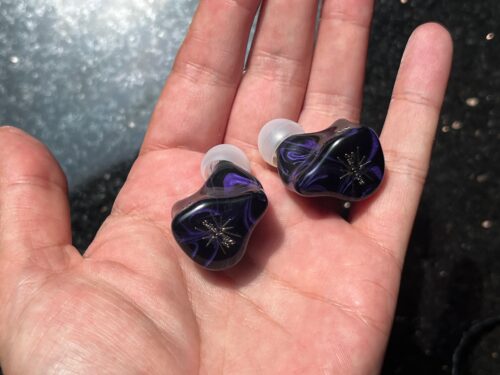
Design
The Quartet features two 10mm dynamic drivers to power the lows and two balanced armatures for the highs. Hence the model name. This setup is a lot simpler than the more unique hybrid 5 driver arrangement of the Quintet, which admittedly shows a bit more character and tidiness than this more budget friendly model.
The Quartet is a reasonably sensitive IEM, and I found it pretty easy to drive. In fact, even when connected to your phone, you should have more than sufficient headroom.
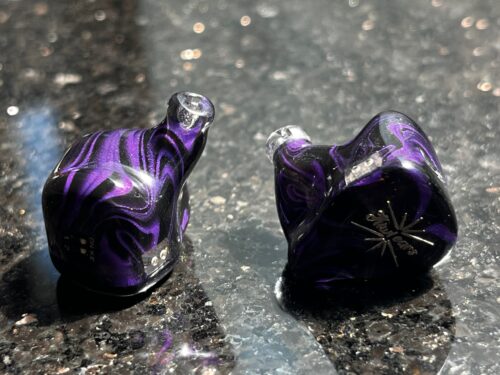
Specifications
|
Kiwi Ears Quartet |
|
| Drivers | 2 Dynamic, 2 BA |
| Frequency Response | 20Hz-20kHz |
| Impedance | 32 Ohms |
| Sensitivity | 110 dB |
| Cable | 2-Pin, 3.5mm Termination |
Sound Impressions
Soundstage
Although the soundstage may not be incredibly expansive, it still presents solid imaging, with instruments across the soundscape maintaining a convincing sense of space between one another. There’s not too much height to the stage, which takes a little away from the overall dimensionality of the soundscape. That being said, gradations in height and depth are clear, as is the placement across the stereo field. So, you will still get a reasonably impressive 3D feel for the price point.
Low-End
The Quartet delivers a thunderous bass that is both, deep and thick. The sub-bass frequencies are especially noteworthy, vibrating the jaws and back of the head. And even in the mid-bass registers, the low-end displays a significant amount of presence in the mix. But as satiating as the bass is, it sometimes feels a little bloated, veiling higher frequencies on certain tracks. This somewhat cloudy bass profile also smooths over detail and texture. But I don’t want to be too critical here, as string instruments, though colored, still exude a natural timbre overall.
Mids
Unsurprisingly, the low-mids are sometimes veiled by the the bass frequencies. And it’s not until we creep up into the higher-mids that the profile starts to feel tidier. In terms of balance, however, you’ll still get a decent dose of low-mid presence, which brings good body to tracks, especially with the help of the warm low-end. Vocals don’t protrude too much either, creating a well-balanced midrange that’s easy to listen to. Still, it’s the overall balance is best suited to modern pop, or in sparse mixes, where there’s a clean and roomy gap between the lows and highs.
Highs
The high frequencies are one of my favorite elements of the Quartet, as they bring a little levity to the otherwise heavy sound profile. Vocals are silky smooth and breathy, while strings and woodwinds show their highest level of transparency once we hit this range. There’s more of a crispness rather than sparkle in the highest registers. So, although the treble isn’t necessarily brilliant, it still lend a snappiness and funk to modern genres. And while the treble extension felt sufficient, I never ran into any peakiness.
Final Verdict
The Quartet may not the cleanest sound signature I’ve heard for 100 bucks. And if you’re willing to spend $200, you’ll find that the Kiwi Ears Quintet performs far better. But if you’re a sucker for sub bass-frequencies, the quartet will certainly deliver. And all in all, these entry-level IEMs are likely to work best for those who listen to modern genres and enjoy a darker, warmer profile that’s easy on the ears.
| Pros | Cons |
| Impactful and entertaining sub-bass | Can feel a bit veiled, could be cleaner |
| Smooth high frequencies | |
| Great sound signature for modern pop |
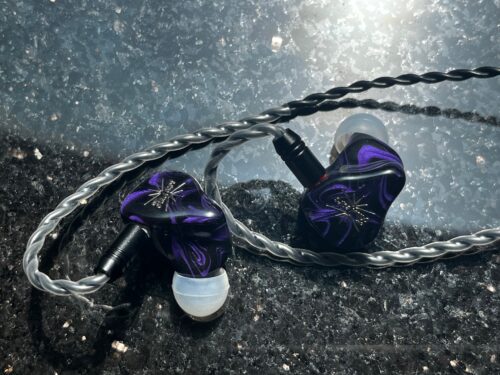
MAJORHIFI may receive commissions from retail offers.


